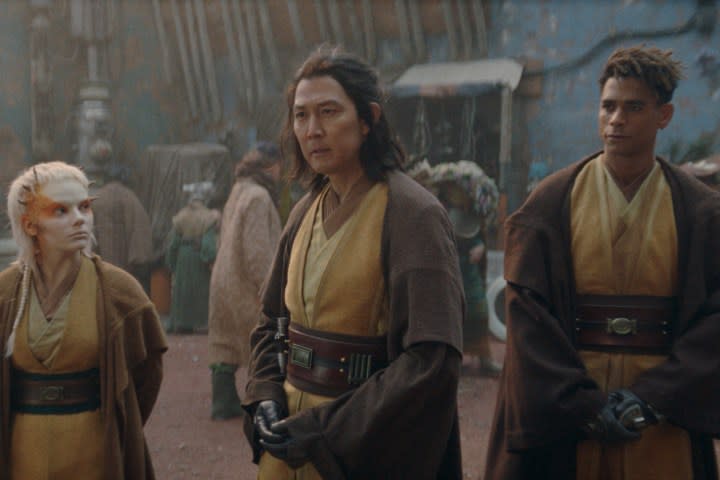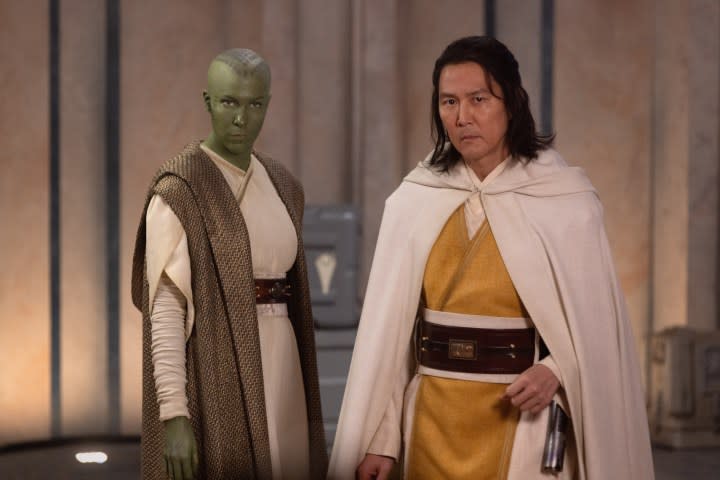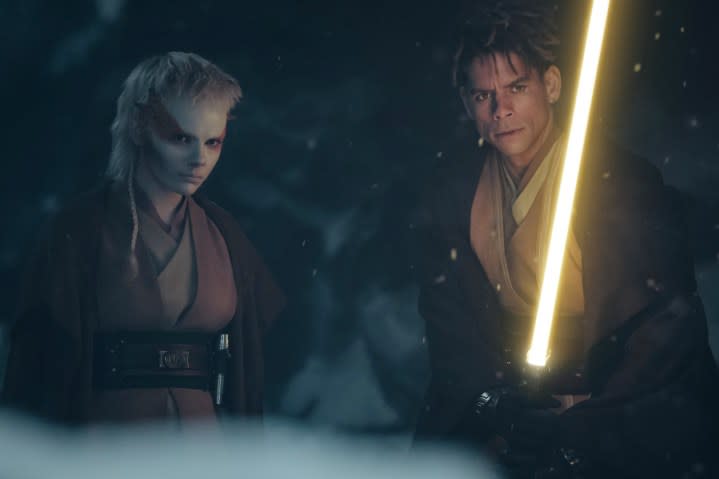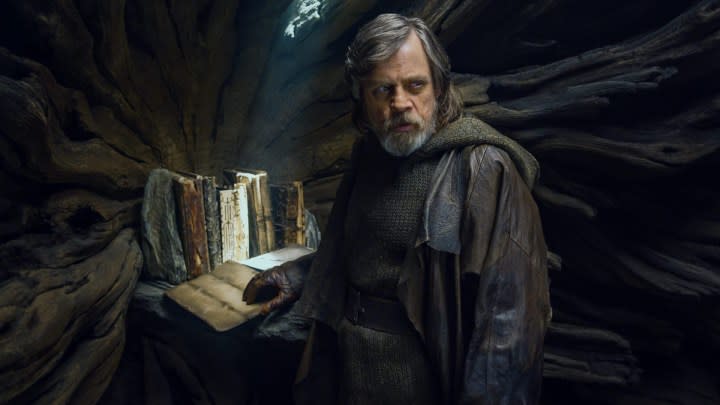The Acolyte can’t escape Star Wars’ biggest Jedi problem

Across its first three episodes, The Acolyte has gotten off to a propulsive, if imperfect, start. The series, created by Russian Doll co-creator Leslye Headland, is one of the only truly original (i.e., not a spinoff) pieces of Star Wars media that Disney has produced in the 12 years since it acquired Lucasfilm. As depressing as that is in and of itself, it’s also helped The Acolyte. The show, for all of its flaws, feels fresh. It isn’t weighed down or suffocatingly constricted by the events of any other Star Wars movie or TV show and, therefore, has the freedom to explore its characters and plot exactly how it wants.
That doesn’t mean The Acolyte has been able to completely avoid making the same mistakes as all of the Star Wars titles that have come before it. On the contrary, the series, which focuses on the reemergence of the Sith near the end of the High Republic era, has struggled in its depiction of the Jedi Order. The Acolyte has, consequently, revived an issue that has plagued its franchise ever since 1999’s Star Wars: Episode I — The Phantom Menace.
Are the Jedi cool samurai or boo-worthy space cops?

For 16 years, Star Wars fans’ collective perception of the Jedi was based entirely on a few characters featured throughout the franchise’s Original Trilogy — namely, Obi-Wan Kenobi (Alec Guinness), Yoda (Frank Oz), and Luke Skywalker (Mark Hamill). The first three Jedi that Star Wars fans ever met were, in other words, interesting and eccentric figures grappling with their own internal struggles. Each of them had identifiable personalities that popped onscreen, and that only made fans build up the Jedi Order in their minds even more.
Then The Phantom Menace was released in 1999, and its viewers were shocked — and a bit disappointed — to learn that the Jedi Order was, for the most part, made up of a bunch of one-note, stoic monks who preached about the dangers of personal connections. This was, to be fair, exactly what George Lucas intended. The Prequel Trilogy is largely about how the Jedi were led astray by both the politics of their time and their own arrogance, so the trilogy’s depiction of the religious order works within the context of the wider story that’s told across The Phantom Menace, Attack of the Clones, and Revenge of the Sith.
In the years since Revenge of the Sith was released, though, the Star Wars franchise has had a hard time deciding what to do with the Jedi. Are they meant to be seen as cool-headed samurai who only want to protect the galaxy? Or emotionless, cop-esque figures who enforce their presence and will on the planets and communities they monitor? In The Acolyte‘s third episode, titled Destiny, they come across more like the latter. Led by Master Indara (Carrie-Anne Moss), the episode’s Jedi characters force their way into a witch coven’s mountain home and demand — under the unspoken threat of force — to test the Force-sensitive capabilities of the coven’s only children, Osha and Mae (portrayed in Destiny by Lauren and Leah Brady).
A sinister side to the heroic Jedi
It’s a jarring, dark twist, and it could only get worse if it’s later revealed that the Jedi featured in the episode had more to do with the deaths of Osha and Mae’s fellow witches than the former, at least, currently knows. For now, Indara, Sol (Squid Game star Lee Jung-jae), and their fellow Jedi’s actions in The Acolyte‘s latest episode still force one to question what the point even is of the Jedi Order. Do the Jedi actually make anything better? Or do they just make it their mission to patrol the galaxy and — in certain instances — track down Force-sensitive children and demand to test them without the consent of their parents? If that’s the case, then one is inevitably left to wonder why they should even want to watch more Jedi-centric Star Wars stories moving forward.

There is, of course, a story to be told about how the Star Wars universe’s most powerful organizations, whether it be the Jedi, the Sith, or even a coven of Force-sensitive witches, demand that its citizens to stick to only a certain number of paths. The Acolyte even touches lightly on that idea in “Destiny.” However, the series has still so far been unable to communicate how it wants its fans to actually view the Jedi Order. Outside of Sol, none of the show’s Jedi characters have registered as particularly compelling or multi-dimensional. Yord (Charlie Barnett) and Vernestra (Rebecca Henderson) both seem as blandly one-note as most of the Jedi of the Prequel Trilogy, while Sol’s Padawan, Jecki (Dafne Keen), has only come across as mildly likable.
The Acolyte proves that Luke Skywalker was right

The Acolyte‘s Jedi problems aren’t unique to it and, if the show’s first few episodes are any indication, there’s a high chance it’ll still be able to tell an ultimately satisfying story. But if even a show as inventive and fearlessly creative as The Acolyte is destined to have a hard time finding a new, balanced way to depict the Jedi onscreen, then that’s not a good sign for the future of the Star Wars franchise. Frankly, the more we learn about the history of the Jedi, the more it looks like Luke Skywalker was right when he said in The Last Jedi that it was time for religious order to end.
That’s not something anyone should be saying about the characters who are essentially meant to fill the “good guys” roles in a franchise that, for all of its many complexities, is still a fairy-tale-esque space opera about the never-ending battle between good and evil.
New episodes of The Acolyte premiere Tuesday nights on Disney+.


